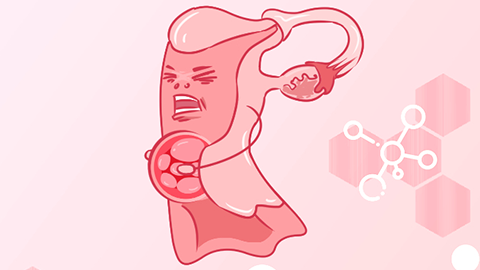What causes uterine prolapse?
Generally, uterine prolapse may be caused by aging-related muscle laxity, childbirth injuries to the pelvic floor tissues, prolonged increased abdominal pressure, underdeveloped pelvic floor muscles, post-pelvic surgery complications, and other similar reasons. It is recommended to seek timely medical consultation to determine the exact cause and receive symptomatic treatment under a physician's guidance. Detailed analysis is as follows:

1. Muscle laxity due to aging: With increasing age, women experience declining ovarian function and reduced estrogen levels, which weaken the elasticity of pelvic floor muscles and ligaments, resulting in insufficient support for the uterus and causing uterine prolapse. Appropriate pelvic floor muscle exercises, such as Kegel exercises, can help strengthen muscle strength. Additionally, topical estrogen cream may be used under a physician's guidance to improve the condition of pelvic floor tissues.
2. Childbirth injury to pelvic floor tissues: During delivery, excessive stretching or tearing of pelvic floor muscles and ligaments may occur. If not repaired promptly, this can lead to decreased uterine support and subsequent prolapse, which may be accompanied by a sensation of heaviness or dragging. Pelvic floor rehabilitation therapies, such as electrical stimulation and biofeedback training, should begin early in the postpartum period. If necessary, a pessary may be used to provide additional uterine support.
3. Prolonged increased abdominal pressure: Chronic cough, constipation, obesity, and other factors can cause sustained elevation of abdominal pressure, continuously compressing the pelvic floor tissues and causing the uterus to gradually descend and prolapse, often accompanied by symptoms such as frequent urination and difficulty in defecation. Active treatment of the underlying condition is necessary—for example, patients with chronic cough may take dextromethorphan hydrobromide syrup, pentoxifylline tablets, amoxicillin capsules, or other medications as directed by a physician to alleviate symptoms.
4. Underdeveloped pelvic floor muscles: Congenital weakness of the pelvic floor muscles results in insufficient support to maintain the normal position of the uterus, making uterine prolapse more likely. Long-term pelvic floor muscle contraction exercises combined with professional rehabilitation training are recommended. In severe cases, pelvic floor muscle repair surgery may be required to reinforce the pelvic floor tissues and enhance support through suturing and strengthening procedures.
5. Post-pelvic surgery complications: Pelvic surgeries such as myomectomy may damage pelvic floor tissues or ligaments, compromising the uterine support structure and causing uterine prolapse, which may be accompanied by low back pain. In severe cases, uterine suspension surgery may be necessary to reposition and fix the uterus in its normal anatomical location, restoring normal function.
In daily life, prolonged standing or sitting and heavy physical labor should be avoided to reduce situations involving increased abdominal pressure. Maintaining a regular sleep-wake cycle, eating a balanced diet, and preventing constipation and obesity are important. Practicing good personal hygiene and avoiding pelvic infections help maintain the health of pelvic floor tissues.




